What a year the last month has been. President Donald Trump has continued the hot start to his second term by boosting his anti-illegal-immigration efforts and moving forward with new tariffs. The former has received support from both Republicans and voters more broadly, but the impact of his brewing trade war is becoming almost all anyone can talk about—and possibly the reason his initially high favorability is starting to slip. More and that and much else below.
Notable Quotable
“Whose throat do I get to choke if this proves to be wrong?”—North Carolina Senator Thom Tillis asks—or maybe threatens—U.S. Trade Representative Jamieson Greer in a Tuesday hearing on tariffs. Along with Maine’s Susan Collins, Tillis is one of the most vulnerable Republican incumbents in 2026.
By the Numbers
Trump Approval
Analysis: Nearly three months into his second term, Trump’s honeymoon is beginning to fade. After beginning with a +11.6-point net approval rating, he is now underwater, with a net approval of -2.6 percent. This notably still puts him in a better position than at any time during his first term. But a net shift of 14.2 points in less than three months is a sign that he had a short leash with the swing voters who put him in office again, and many don’t like the early returns so far. The main culprit looks to be his handling of inflation so far.
Right Track/Wrong Track
Analysis: During the first two months of Trump’s presidency Americans’ outlook on the direction of the country was ticking slowly upward. At one point, in mid-March, the gap between right track (42.6 percent) and wrong track (48.4 percent) was at its second-lowest level in at least 16 years (5.8 points). However, over just the past few weeks, that has changed, and the gap has more than doubled—in the wrong direction.
Economic Overview1
Analysis: Topline economic indicators from February—the last month for which formal figures have been released—show an economy that has been in pretty decent shape lately. That may be changing, though. Consumer sentiment data from just this week found that U.S. consumer confidence plummeted to a 45-year low, declining 40 percent overall and even 20 percent among Republicans. If the economic fallout of Trump’s growing trade war begins hitting everyday Americans—including through higher prices or even a recession—that confidence may nosedive even further.
An Eye on the Hill
Below are a few key votes each chamber of Congress took over the past month.
House
Bill: Safeguard American Voter Eligibility Act (SAVE) Act (H. R. 22)
Summary: This bill requires individuals to provide documentary proof of U.S. citizenship when registering to vote in federal elections. Republicans have argued it’s needed to eliminate instances of noncitizen voting (rare though they are). Voting-rights groups argue the law could disenfranchise voters “who already are registered if they move, change their name or otherwise need to update their registration.” The bill awaits an uncertain fate in the Senate, where Republicans likely don’t have the votes to overcome a filibuster.
Roll Call Vote: 220–208
Democrats: 4 Yeas, 208 Nays
Republican: 216 Yeas, 0 Nays
Bill: Establishing the congressional budget for the United States Government for fiscal year 2025 and setting forth the appropriate budgetary levels for fiscal years 2026 through 2034 (H. Con. Res. 14)
Summary: House Republicans approved a multitrillion-dollar budget framework that allows the party to begin the process of drafting legislation to enact key elements of President Trump’s domestic policy agenda, including tax cuts and spending on defense, energy, and immigration.
Roll Call Vote: 216–214
Democrats: 0 Yeas, 212 Nays
Republicans: 216 Yeas, 2 Nays
Bill: No Rogue Rulings Act (H. R. 1526)
Summary: This bill limits the authority of federal district courts to issue injunctions.
Roll Call Vote: 219 Yeas, 213 Nays
Democrats: 0 Yeas, 212 Nays
Republicans: 219 Yeas, 1 Nay
Senate
Bill: On the Concurrent Resolution (H. Con. Res. 14, As Amended)
Summary: The Republican-led Senate approved a revised framework for a sweeping budget plan that is critical to President Trump’s domestic agenda. The vote brought congressional Republicans one step closer to finalizing a sweeping multi-trillion dollar plan to address defense, energy, immigration and tax policy.
Roll Call Vote: 51 Yeas, 48 Nays
Democrats: 0 Yeas, 46 Nays
Republicans: 51 Yeas, 2 Nays
Bill: Halt All Lethal Trafficking (HALT) of Fentanyl Act Act (S. 331)
Summary: This bill permanently places fentanyl-related substances as a class into schedule I of the Controlled Substances Act.
Roll Call Vote: 84 Yeas, 16 Nays
Democrats: 31 Yeas, 16 Nays
Republicans: 53 Yeas, 0 Nays
Bill: A joint resolution terminating the national emergency declared to impose duties on articles imported from Canada (S. J. Res. 37)
Summary: This joint resolution terminates the national emergency declared by President Donald J. Trump on February 1, 2025, which imposed an additional 25% tariff on most imports from Canada (except for Canadian energy or energy resources, which have an additional 10% tariff).
Roll Call Vote: 51 Yeas, 48 Nays
Democrats: 47 Yeas, 0 Nays
Republicans: 4 Yeas, 48 Nays
Confirmation: Jay Bhattacharya to be director of the National Institutes of Health
Roll Call Vote: 53 Yeas, 47 Nays
Democrats: 0 Yeas, 47 Nays
Republicans: 53 Yeas, 0 Nays
Confirmation: Mehmet Oz to be administrator of the Centers for Medicare and Medicaid Services
Roll Call Vote: 53 Yeas, 45 Nays
Democrats: 0 Yeas, 47 Nays
Republicans: 53 Yeas, 0 Nays
The Ballot Box
Wisconsin’s 1st and 3rd Congressional Districts
Susan Crawford’s victory in the Wisconsin Supreme Court race might mean new congressional maps are on their way in the Badger State. Should the liberal majority order a redraw, two Republican members are at risk: Bryan Steil (WI-01) and Derrick Van Orden (WI-03). Steil’s southeastern district could take in more of the Democratic-leaning Milwaukee suburbs, while Van Orden could absorb some of ultra-liberal Dane County.
Even if the current map stays in place, Van Orden is at risk in his Trump +7 district. The foul-mouthed firebrand won re-election in 2024 by just 2.7 points, underperforming the top of the ticket by a substantial amount. Rebecca Cooke, his Democratic opponent, has already launched her 2026 campaign in hopes of a rematch. Steil is a stronger candidate than Van Orden and should be safe, but his seat is still one to watch if things go south for Republicans.
Wisconsin’s 1st District (Bryan Steil)
Geography: southeastern Wisconsin (Kenosha, Racine, and Walworth Counties), parts of Milwaukee County
2024 Presidential Results: Harris – 46.9 percent, Trump – 51.4 percent
Cook Political Report PVI2: R+2
Wisconsin’s 3rd District (Derrick Van Orden)
Geography: Driftless Area (southwestern and western Wisconsin), including Eau Claire and La Crosse
2024 Presidential Results: Harris – 45.5 percent, Trump – 52.8 percent
Cook Political Report PVI: R+3
Data Snapshot
Last month, Split Ticket’s Lakshya Jain analyzed whether moderate candidates of both parties over- or underperform more mainstream or ideological members. His conclusion? “In each of the 2018, 2020, 2022, and 2024 cycles, we found that the more moderate a congressional caucus was, the better its members did, on average.”
Below is a snapshot of how different incumbents in the House of Representatives performed over that period, broken down by the ideology-based congressional caucus they belong to:
Read the full analysis here.
Around the Web
“Democrats Need to Face Why Trump Won,” by Ezra Klein and David Shor in the New York Times. Democratic data guru David Shor sat down with the Times to discuss new post-election data from his firm, Blue Rose Research. Shor breaks down why Harris lost and Democrats appear stuck in the woods.
Democrats are not in power right now. That means we don’t have agenda control.
A lot of this will depend on what Trump does next — and who eventually replaces him. Looking back at the 2016 election and Trump’s first term, one thing that stood out in polling of noncollege whites, particularly Obama-Trump voters, was how remarkably stable their approval of Trump remained throughout most of his presidency. The only time that approval declined was when Trump tried to repeal the Affordable Care Act. But once that issue was out of the news, they switched back.
So at this moment, given that there’s no clear party leader, I think it’s mostly a question: If Trump does successfully push a bunch of welfare state cuts, might that change the realignment? But realistically, at least until 2026, it’s mostly going to depend on what Republicans do. When we pick a new presidential candidate, that will be a reset. I don’t think it’s too early to start talking about that. You could imagine us picking candidates who would do a much better job.
— — —
“Does moderation actually hurt Democratic candidates?,” by Eric Levitz in Vox. Levitz takes on a recent debate—outlined in the Split Ticket piece above—about whether moderation actually helps Democrats running for public office. Specifically, he addresses a recent paper out of Stanford University that argued it had found “a clear conclusion: There appears to be very little electoral advantage from running to the center in contemporary congressional elections.” But, Levitz writes:
[T]his debate proceeds from a false premise: Bonica’s data doesn’t actually cut against the idea that moderation is beneficial.
On the contrary, his study indicates that moderation can significantly increase Democrats’ support with swing voters, especially in high-profile races. He and his co-authors note it is theoretically possible that this benefit is outweighed by moderation’s negative impact on Democratic turnout. But, by their own admission, they possess no strong evidence that such a negative impact exists.
— — —
“Americans Are Worried About the Economy—but Don’t Think Politicians Share Their Concerns,” by More In Common. The group behind the Hidden Tribes project writes on their Substack that part of what might be frustrating voters today is a sense that politicians aren’t listening to their concerns. At the moment, many think the Trump administration is too focused on his tariff policy and not enough on addressing inflation and cost-of-living issues. They conclude:
If politicians are interested in rebuilding trust, they must do a better job at showing they share Americans’ priorities—and not just those of their most vocal supportive bases. Long-term national success depends both on policies that reflect and respond to the needs of the broader public and a public that trusts their elected leaders are working in their interests.
What We’re Watching
Now that Republicans in both chambers of Congress have passed identical budget blueprints for Trump’s agenda, they will begin working on the actual funding bills, which they’ll seek to pass along party lines using the reconciliation process in the Senate. Still, there remain questions about exactly how much in government spending they will cut versus how extensive they will make their tax cuts, as the two chambers still have slightly different ideas of what those numbers should be. House Republicans have also said a significant amount of savings will come from cuts to Medicaid, something several senators have expressed reservations about.
This past week, the Supreme Court unanimously upheld a lower court ruling that the Trump administration must “facilitate” the return of a Maryland man whom they mistakenly deported to El Salvador. However, the administration has slow-rolled this effort, leading the lower court that initially issued the ruling to admonish them. It remains to be seen just how long Trump and his team drag this out—and whether it leads to another confrontation with the Supreme Court.
After the whiplash of Trump’s early tariff moves sent the markets into a tailspin, the president agreed to pause most of them for at least 90 days and left open the possibility of a longer extension. He has also since exempted electronics like phones and computers. The main target of his moves has now become China, against whom he has hiked tariffs to 125 percent. We’ll be watching to see how all this develops in the month ahead.
Most economic figures usually lag a couple of months, as it takes time to collect this data and make it public.
According to Cook, their PVI—or Partisan Voting Index—measures how each state and district performs at the presidential level compared to the nation as a whole.


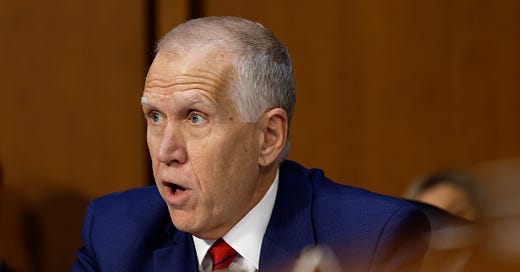





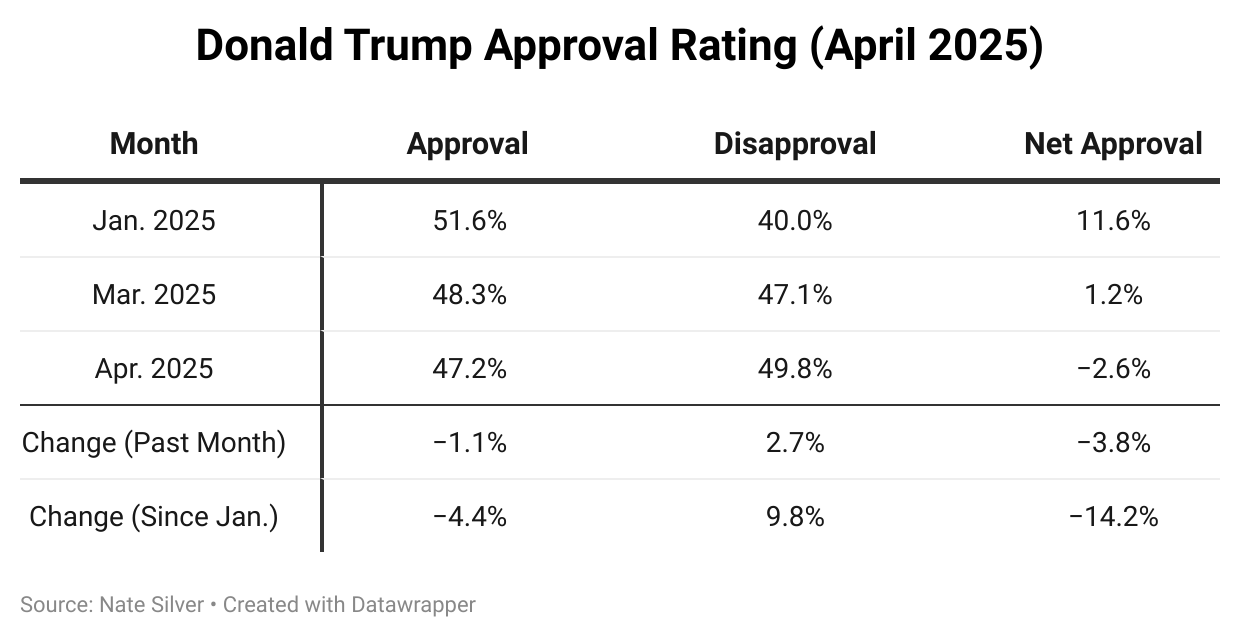

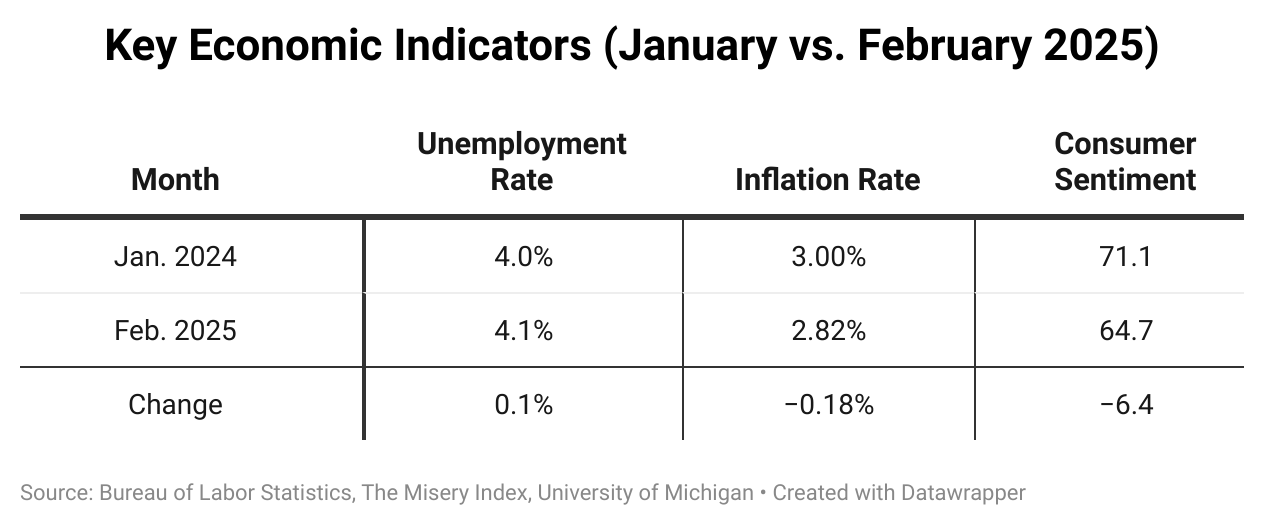
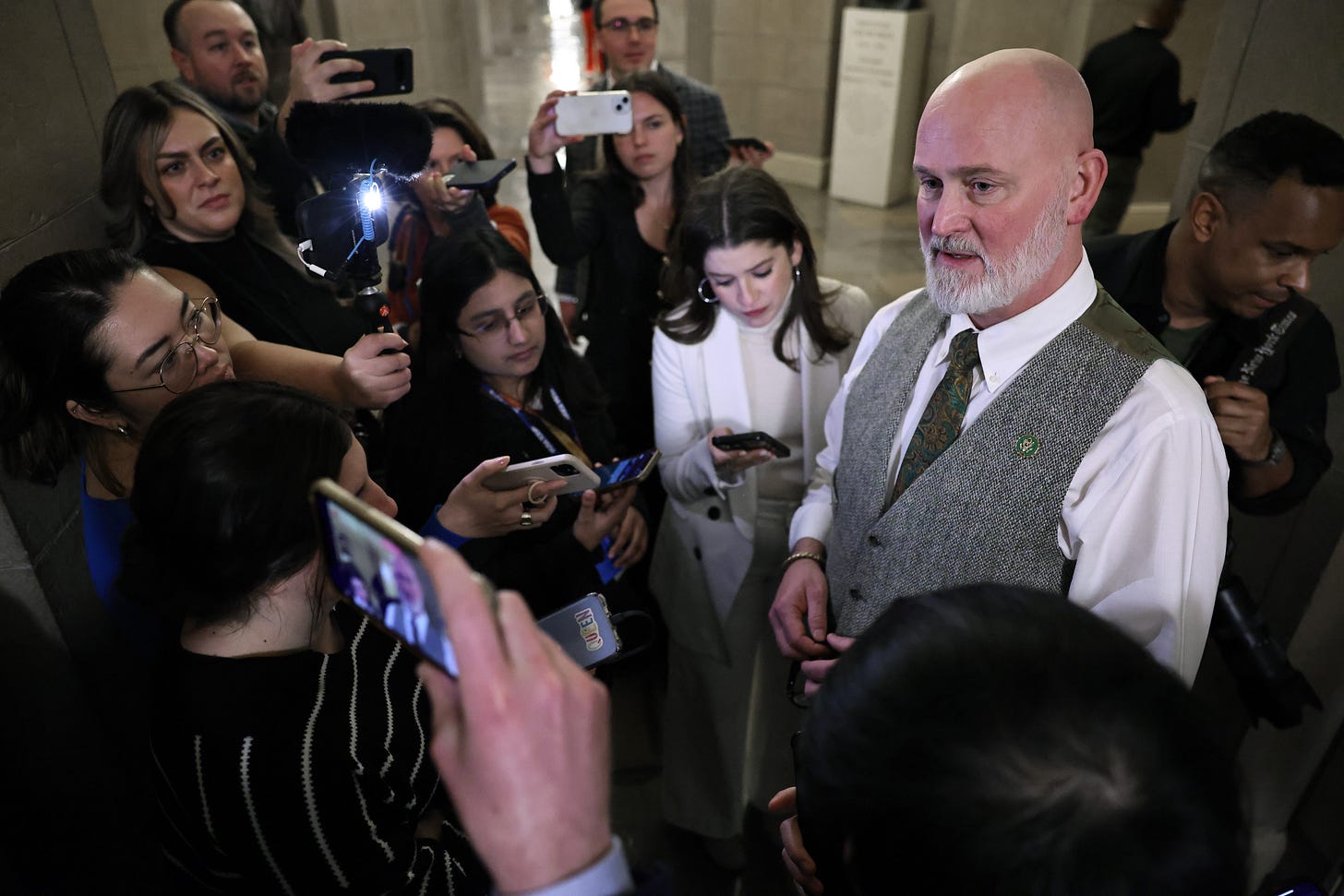
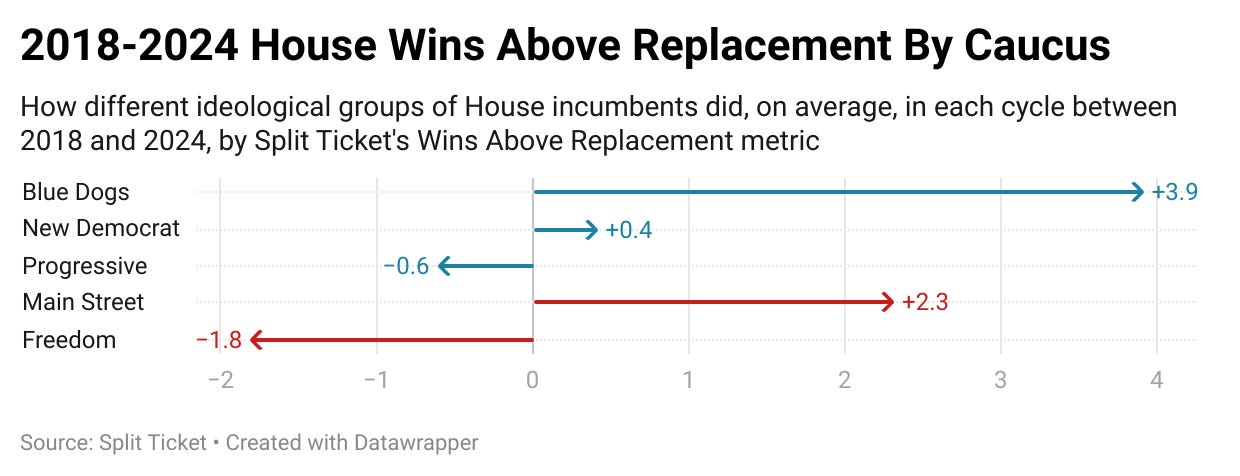
I will leave it to you guys who care as to whether moderation helps with electability. But it definitely helps with governance. And yet when Whitmer tried to work with Trump on issues, she was immediately branded as a traitor. Cooperation needs to be issue specific but there is plenty of room there.
Just spent 4 weeks in France with the French members of my amily, and I am bilingual. Will make a few points:
1. French media is beserk over Trump, the people not so much. Taxi drivers ( I spoke at length with two), and ordinary working class people are open minded and think maybe he is not so bad. They can't stand Macron and their own political class. 2. NO ONE I met, from highly educated. to working class supports the Ukraine war. This is a project of elites. 3. The elites and media lost a lot of trust due to covid craziness and Ukraine war. 4. Most French are fundamentally anti-woke, even if the elites and media are pro-woke. By the way, I have yet to see a gender neutral bathroom.